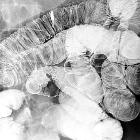Enteroklysma




Enteroclysis is a gastrointestinal technique designed to provide improved evaluation of the small bowel. The conventional fluoroscopic technique is not widely used since it is somewhat invasive, time and labor intensive, and not particularly pleasant for the patient. The exam also requires a degree of skill to perform, and often the information can be gathered through other techniques. In experienced hands, however, it is the best radiographic technique for evaluation of the small bowel mucosa.
Modifications of the traditional technique may involve CT or MRI (see CT enteroclysis and MR enteroclysis). These should be differentiated from the more routine CT and MR enterography.
Indications
- examination of mucosal detail of the small intestine
- improved evaluation of small bowel tumors or inflammatory disease relative to small bowel follow through (SBFT)
Procedure
Enteroclysis can be performed in one of three main ways:
- single-contrast enteroclysis
- easier technique and less patient discomfort, but evaluation of the mucosa is less than with the other techniques
- air-contrast enteroclysis
- better for evaluation of mucosal detail of proximal small bowel loops
- may be better for long segment disease
- more discomfort for the patient than single contrast
- methylcellulose enteroclysis
- better for evaluation of mucosal detail than single-contrast
- may be better for short segment disease
- easier to visualize through bowel loops
- some consider it a more consistent double-contrast exam than air-contrast enterocylsis
- more discomfort for the patient than single contrast
Equipment
- an 8-13 F enteroclysis catheter
- topical anesthetic to ease passage of the enteric tube
- multiple syringes or an enteroclysis pump
- barium specially prepared for the type of study
- single-contrast enteroclysis: low density barium (20-40% weight/volume)
- air-contrast enteroclysis: medium density barium (40-80% weight/volume)
- methylcellulose enteroclysis: high density barium (80% weight/volume)
- enteroclysis is rarely if ever performed in a setting of possible small bowel leak, but if situation were to arise, water-soluble contrast should be used
- compression paddle
General technique
There are multiple different techniques that have evolved for performing enteroclysis. The following technique is one conventional approach. In some centers the patient undergoes a clear liquid diet or full bowel prep the day before the exam to clear the terminal ileum and ascending colon. Medication agents that inhibit small bowel peristalsis should be temporarily suspended on the day of the exam (e.g. narcotics).
Single-contrast enteroclysis
Air-contrast enteroclysis
Methylcellulose enteroclysis
History and etymology
Enteroclysis has been performed since the 1920s . The term derives from "entero-" (intestine) and "klysis" (a washing out).
Siehe auch:
und weiter:

 Assoziationen und Differentialdiagnosen zu Enteroklysma:
Assoziationen und Differentialdiagnosen zu Enteroklysma:
